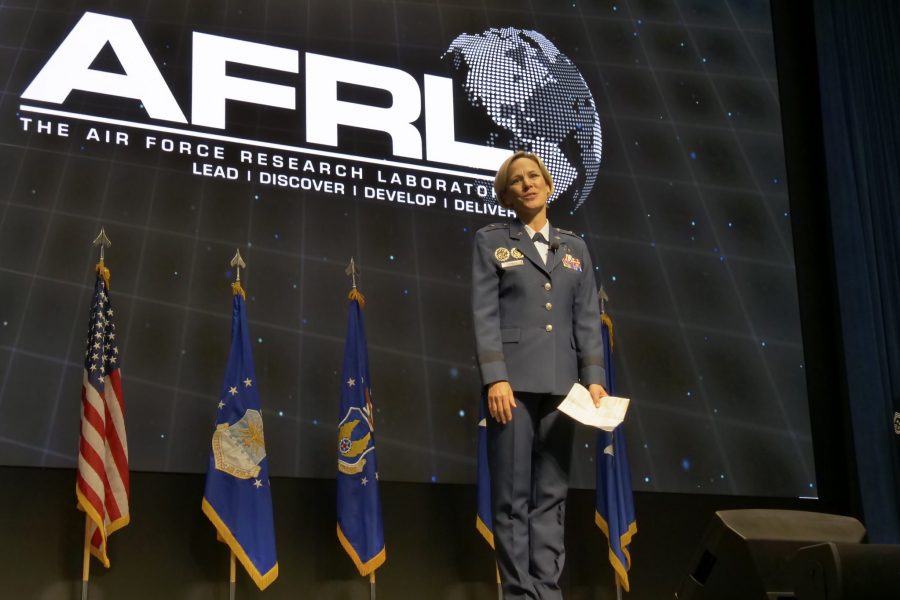The Air Force Research Laboratory is kicking off 2021 with plans to forge closer ties with the fledgling Space Force and a new focus on digital engineering.
AFRL boss Brig. Gen. Heather L. Pringle laid out the lab’s priorities in a Feb. 4 talk with AFA’s Mitchell Institute for Aerospace Studies.
As AFRL now covers science and technology initiatives for two of the armed forces instead of just one, she said they’re working to align programs with Chief of Space Operations Gen. John W. “Jay” Raymond’s top research needs: space security, space domain awareness, combat power projection, information mobility, and mobility and logistics in space.
“We’ll be mapping our science and technology portfolio to his five priorities,” Pringle said. “A technology doesn’t know its application until we tell it. So if we’re talking about microelectronics, we don’t know where it’s going to end up—in a satellite or an airplane—and it’s important to be flexible across the board.”
Around 700 AFRL employees will join the Space Force but will continue their regular research in areas like satellite design, Pringle said. Maj. Gen. Kimberly A. Crider, Raymond’s mobilization assistant, is overseeing the new service’s S&T portfolio and working through which units across the Defense Department contribute to those space-focused projects. AFRL is one piece of that puzzle, Pringle added.
The lab may also turn to promising ideas that could benefit both air and space missions as fast-tracked “vanguard” programs.
“I would see in the future that we would continue to have a balance across both services,” Pringle said of splitting vanguards between air and space ideas. “We would probably see times where we would partner across services for maybe a true multidomain-type approach. The possibilities are out there for any and all of the above.”
For projects of all stripes, the Department of the Air Force wants to turn to a digital-first engineering process where much of design and testing happens via software rather than using physical prototypes. That will require new data-crunching apps and a deeper understanding of what code can do.
“Our mantra is going to be ‘collaborate to innovate,’” Pringle said. “This will involve building some digital tools and inculcating a digital workforce and bringing in some digital engineering.”
To address the workforce part of the equation, she pointed to efforts to speed the hiring process and a new plan to repay student loans worth up to $125,000, which could entice graduates with heavy financial burdens who might be looking to a more lucrative private-sector career.
“That’s pretty big to get some top talent,” Pringle said.
As the public sector struggles to build a strong future workforce amid fierce competition with industry, she noted that AFRL’s work to foster future scientists from childhood STEM programs to high school mentorships to collegiate opportunities has led more people to stick with federal careers.
“We have an initiative that’s created this pipeline from introduction to growth to hiring, and we’ve had some success in retention there,” Pringle said. “Graduating from those three different stages, we’ve had about 94 percent retention, so that should yield some benefits in the long run as well.”
